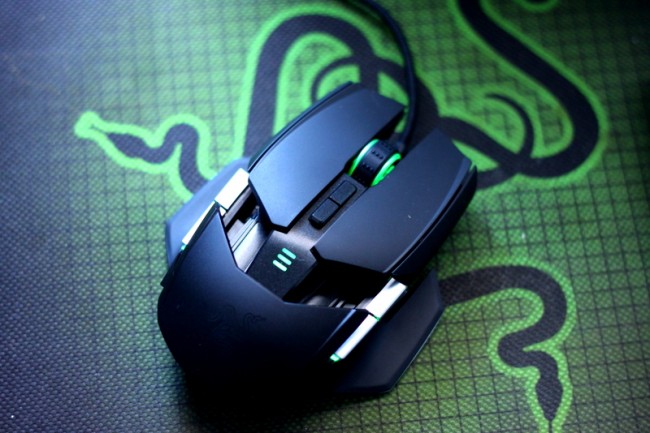I’m a left-handed gamer, and unlike those treacherous left-handed gamers who play games right-handed instead because THEY HAVE NO SELF-RESPECT (or whatever), I play games left-handed. In fact, I’ve been using a left-handed Razer DeathAdder mouse for about six months now, and before that I used the now tragically discontinued Logitech MX610, but before that I used a right-handed something-or-other because, honestly, left-handed gaming mice are not exactly available in abundance and right-handed people expect everything to be made exclusively for them anyway. It’s true, just look at scissors.
No ad to show here.
The mouse ships with two pairs of interchangeable magnetic snap-on panels that you can swap out as you like (or not use at all if you want to get all minimalist) – one is a flat, grippy panel for a streamlined feel, and the other has a sort of wing for parking your thumb and/or pinky finger. The back half of the mouse can be extended to accommodate larger hands, and can also be tilted up or down according to the user’s hand and palm profile.
With a bit of this and a bit of that, the mouse can be adjusted to fit just about any hand very comfortably, and as a value-added bonus it also looks like it’s designed to deflect military radar, which is a useful feature if you’re planning to take down the Pentagon or something. Full marks for ergonomics and Batman factor.
Conveniently, this mouse includes both wireless and wired functionality, and will recharge its battery when plugged in. The battery life is press blurbed at 12 hours, although I’d put it closer to 8-10 in maximum button-pushing scenarios. I did find that switching between wireless and wired caused Windows to stall for a moment, however, which could be a problem in the middle of a game. So don’t do that unless you absolutely have to, because nobody is going to believe the “But I was switching between wireless and wired” excuse when your KPD drops a decimal point.
The Ouroboros also has dual optical and laser sensors so you can use this thing on pretty much any surface, as well as 11 programmable buttons and a motion sensitivity of up to 8200 DPI. When the side panels are attached, these can be squeezed simultaneously as a clutch trigger to temporarily dial down the DPI for improved accuracy, and sniper-based griefing in your FPS of choice. It definitely takes some getting used to, but makes an enormous difference when you get it just right.
With a pricetag of around R1 500 (US$170), the Ouroboros is not exactly cheap, but you’re paying for high performance and precision, state-of-the-art neon green LED backlighting, and the end to left-handed gamer discrimination. Go for it.
Update time!
FIBS! I got an email from Razer’s PR guy-with-coolest-surname-ever, Alain Mazer, who pointed out that, while left-handed people are indisputably better than right-handed people at everything else, we sometimes get confused when it comes to the complicated workings of cloud-based technology.
According to Mr Mazer, “Once the mouse is registered and set-up, it does not require an always-on connection. Its features, advanced or otherwise, reside with the client and are enabled in an ‘offline mode.’ To be clear, an ongoing connection to Synapse 2.0 is not required for Synapse-designated settings in the mouse to be manifested in the user experience.”
So you’ll still have to register online to install the Synapse 2.0 software, but in the subsequent event of a fireball apocalypse or space monster invasion that knocks out your internet connection, you’ll still be able to use your Razer Ouroboros. It’s the little things.
